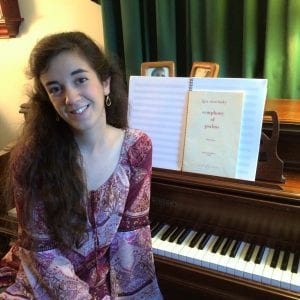Summer Study: Stravinsky’s Style

My first personal experience with the music of Igor Stravinsky was in 2014 when I sang Symphony of Psalms with the Eastern Connecticut Symphony Orchestra and Chorus. Two years later, I’m still fascinated. In an amalgamation of styles and techniques, Stravinsky takes elements of music we’ve all grown up with and reinvents them to conform with his own unique conception of music. For an example, you need look no further than the double fugue in the second movement of Symphony of Psalms, which takes a technique perfected by Bach and puts a stylistic spin on it that is unmistakably Stravinsky.
But what is this personal style? From where did it emerge? Is it fed solely from the Western tradition, or are there other influences at play? An examination of the influences on Stravinsky’s style and music is the focus of my research this summer. More specifically, I will be looking at the influences of traditional Russian Orthodox liturgical chant on Stravinsky’s Catholic liturgical works, namely his Mass and Symphony of Psalms. As a member of the Russian Orthodox church, it is highly probable that elements of Orthodox liturgy would have worked their way into Stravinsky’s style and come across in some of his most spiritually powerful compositions.
To accomplish this project, I will be spending my summer traveling to various libraries and archives in southern New England and New York, where I will be studying the development and evolution of Stravinsky’s style and the characteristics of Russian Orthodox liturgical chant, in an attempt to discover the common ground between the two areas. To develop a better grasp of the nuances of Russian Orthodox chant, I will also be in touch with a Russian Orthodox hymnographer throughout my research. Once this portion of the research is completed, my next task will be to complete an analysis of both of Stravinsky’s works to determine the extent to which they were influenced by Russian Orthodox chant. If I’m correct, there will be substantial crossover in style, which will help to explain some of the anomalies in the traditional Western, tonal theory based interpretations of the scores that fail to fully account for the presence of certain chordal progressions and voice leading choices Stravinsky presents us with throughout both Catholic liturgical compositions.
And so begins my summer research project. Having been an avid admirer of Stravinsky’s music for some time now, I’m looking forward to taking a closer look at some of my favorite of his compositions, while simultaneously indulging my love for music theory and analysis — an opportunity made possible by my Veritas Research Grant. I couldn’t be more excited to begin.
Cheers,
Joan Miller, Class of 2018





